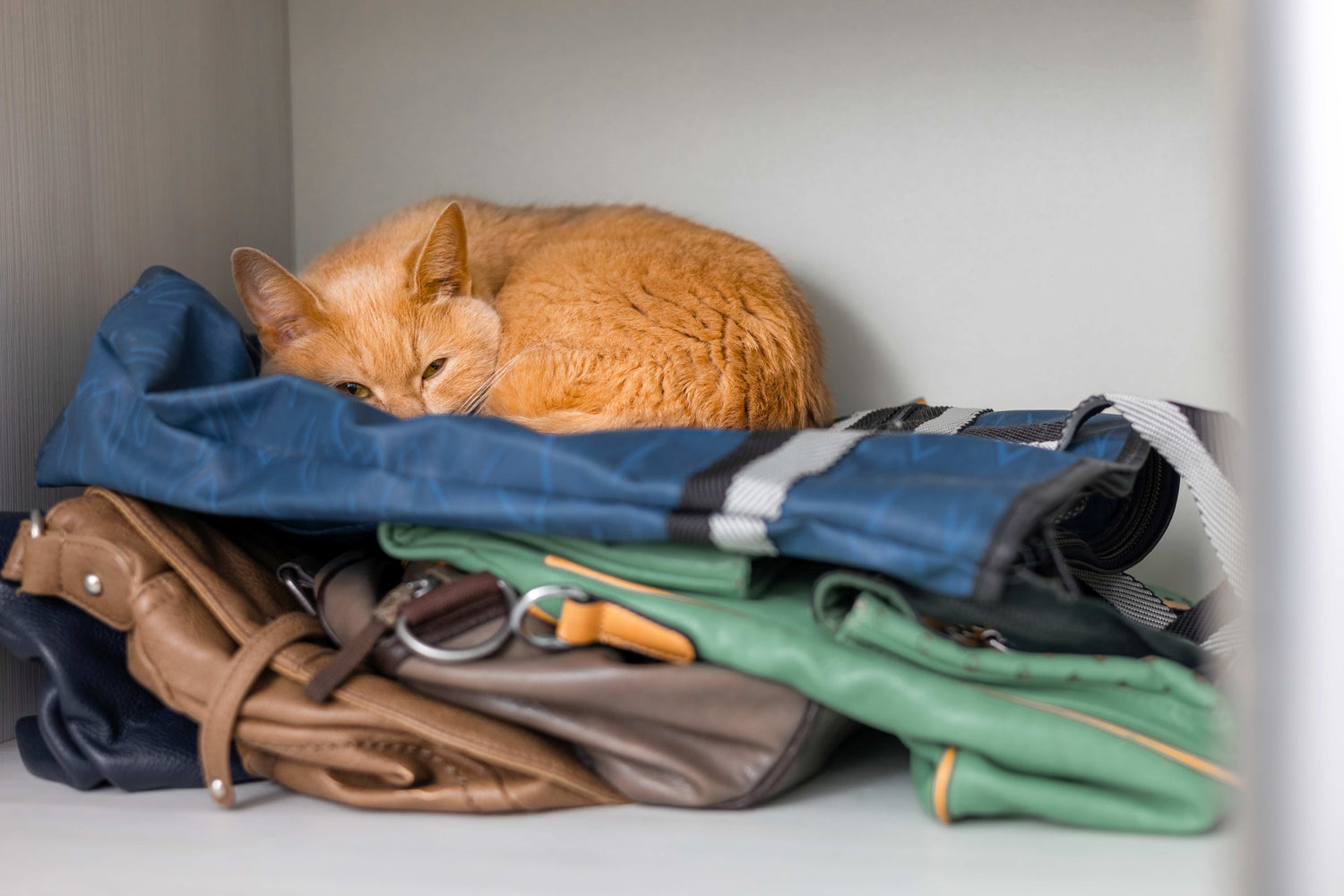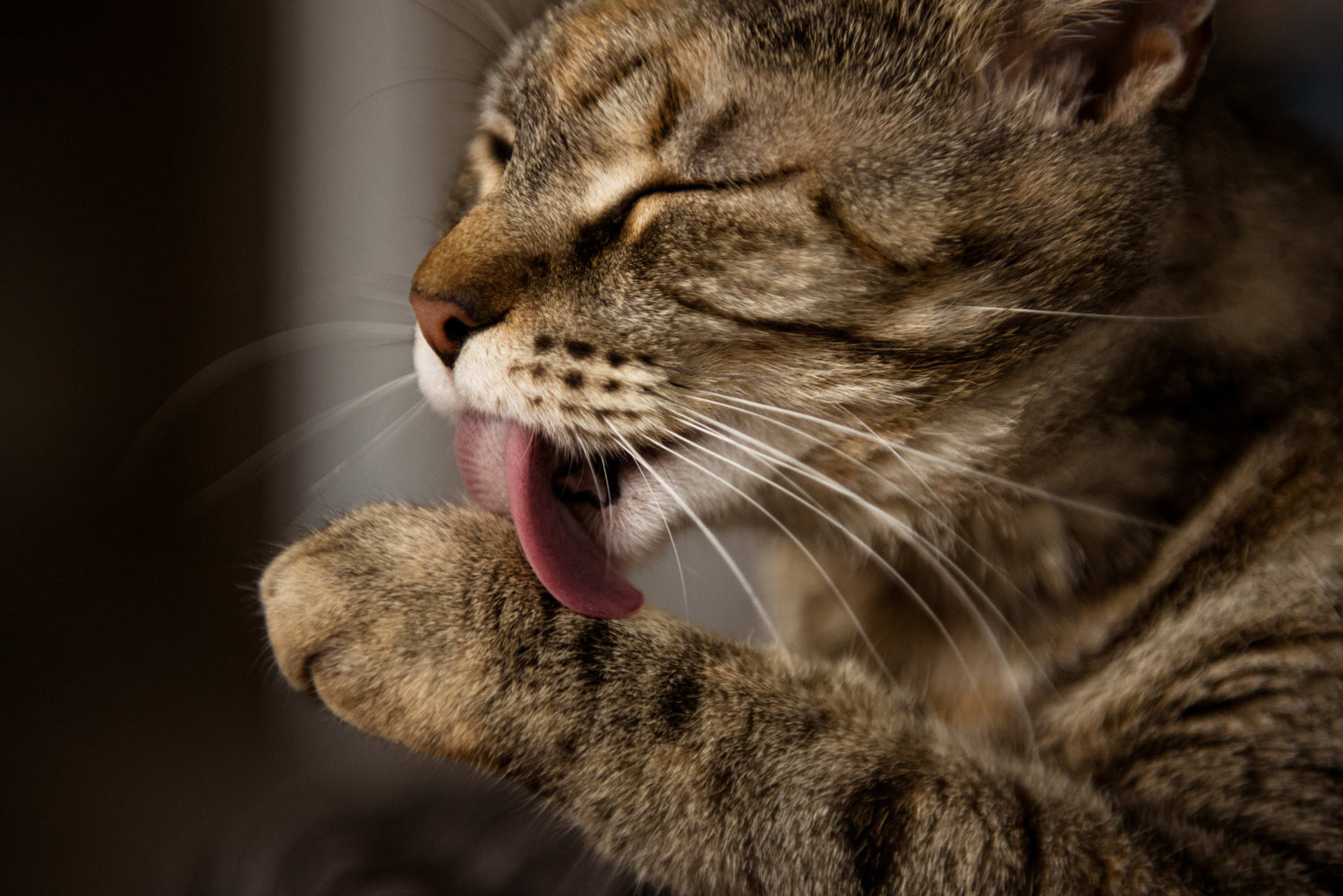An inflammation in a cat's mouth can occur quite frequently. Unfortunately, it is often accompanied by great pain and significantly affects the quality of life and health of your furry friend. Such an inflammation can indicate serious illnesses and can have serious consequences if left untreated. For this reason, you should always keep an eye on your cat's dental and oral health. Find out here what causes an inflammation in the mouth, what symptoms typically occur and how you can best treat your furry friend.
Inflammation in a cat's mouth
Inflammation in a cat's mouth is a common phenomenon that can manifest itself in different ways. If the gums are inflamed, experts speak of gingivitis. If the mucous membranes in the entire oral cavity are inflamed, it is stomatitis. If, on the other hand, the periodontal ligament is affected by inflammation, the cat is suffering from periodontitis. These inflammations often occur together or, if left untreated, merge into one another, so that the animal gradually suffers from various sources of inflammation in the oral cavity. Below we summarize the causes, symptoms and treatment options for gingivitis, stomatitis and periodontitis for you.
[Sensitive]
gingivitis in cats
Gingivitis in cats is an inflammation of the gums. The gums, i.e. the mucous membrane at the edge of the teeth, are usually very red and swollen. There are the following types of gingivitis:
- Eosinophilic gingivitis : is associated with inflamed nodules; may be due to allergic hypersensitivity attributed
- Erosive gingivitis : damages the upper layer of the mucous membrane; usually caused by a virus
- Catarrhal gingivitis : occurs in association with watery secretion or mucus
- Lymphoplasmacytic gingivitis : recognizable by tumors and ulcers in the oral cavity
More symptoms and signs of gingivitis are severe redness and swelling of the gums severe pain the cat, especially when eating, which is caused by whining, loss of appetite , weight loss and touch sensitivity Affected cats are also often tired and exhausted, suffering from bleeding gums , severe bad breath and salivate increased.
Causes of Gingivitis in Cats
The development of gingivitis in cats can be due to various causes and diseases be due to:
- Injury caused by foreign bodies (e.g. food or blades of grass)
- Organ diseases (e.g. renal insufficiency )
- Viral infections such as feline panleukopenia virus (FPV), feline calicivirus (FCV), feline herpesvirus (FHV-1), feline AIDS (FIV)
- Bacterial infections (promoted by plaque and tartar)
- Allergic hypersensitivity reaction
- tumor diseases
- periodontitis
Stomatitis in cats
In case of stomatitis, not only the cat’s gums are affected, but also the entire oral mucosa affected by inflammation. It manifests itself in redness and swelling the mucous membrane - even away from the teeth. Other signs and symptoms are similar to those of gingivitis: cats with inflammation of the mucous membrane often suffer from bad breath and severe pain. The latter leads to unusual behavior when eating. Affected cats are, for example, noticeably loud, salivate and smack their lips heavily, hiss at their food, scratch their mouths and inside, or in the worst case, refuse to eat at all, so that over time they lose weight and literally become emaciated. Ulcers can also develop as a result of inflammation of the mucous membrane.
Causes of Stomatitis in Cats
Parallels to gingivitis can also be seen in terms of the causes of stomatitis: injury to the mucous membranes can be the basis as well as a large number of bacteria due to plaque or tartar. viral diseases like FPV and FIV or problems with the immune system can be the cause. Last but not least, untreated gingivitis can spread from the gums to the rest of the oral mucosa. In this case, Feline Stomatitis-Gingivitis before.
Periodontitis in cats
Periodontitis often occurs as a side effect of stomatitis or gingivitis. It begins as gum inflammation, but then spreads to the periodontium The periodontal ligament is made up of the jawbone, the gums and the periodontal fibers between the tooth roots and the bone and attaches the teeth. If these fibers become inflamed, the tissue is gradually broken down and the affected tooth becomes loose and can also become inflamed. As periodontitis progresses, the jawbone attacked and it can lead to dangerous breakthroughs and bone fractures can occur.
An inflammation of the periodontal ligament is extremely painful: it usually causes affected cats difficulty eating and weakens their general well-being. treatment at the veterinarian is essential – the affected teeth may need to be removed to resolve the problem.
Causes of Periodontitis in Cats
In most cases, periodontitis is due to plaque If food residues accumulate between the teeth, a plaque forms on the teeth – also plaque This is a popular Collection place for bacteria . If the plaque is not removed, it hardens and calcifies and becomes stubborn tartar . The bacteria multiply and can penetrate the mucous membranes through a weakened immune system or the smallest injuries in the cat's mouth, causing inflammation and leading to periodontitis.
As with other inflammations of the oral cavity, more serious organic diseases and viral and bacterial infections that weaken the immune system and make the cat susceptible to inflammation. Therefore, you should always arrange for a detailed examination by a veterinarian.
If left untreated, the inflammation becomes chronic, continually weakens the cat and, in the worst case, can even spread to other organs. Periodontitis can also promote other dental diseases such as FORL. We will look at what this is all about below.
FORL in cats
FORL stands for Feline Odontoclastic Resorptive Lesions – a dental disease in cats that is responsible for dissolution of teeth and roots FORL is a very common disease that occurs in cats aged five and over is particularly often diagnosed.
Feline odontoclastic resorptive lesions are usually caused by calcium deficiency of the cat. As a result, calcium components from the teeth are broken down by the body's own cells, the odontoclasts. This is accompanied by lesions, i.e. destruction of the tooth and root tissue. However, since the nerves remain, cats suffering from FORL suffer from severe pain.
Typical symptoms therefore include:
- Pain when eating and refusal of food
- Tilted head posture or frequent head shaking
- grinding or chattering of the teeth
- Increased salivation
- In advanced disease: broken teeth
If you suspect that your cat has FORL or is suffering from another inflammation in the mouth, you should see a veterinarian as soon as possible to prevent things from getting worse and to help your four-legged friend get back to normal as quickly as possible.
Diagnosis of inflammation in the mouth
To make an unequivocal diagnosis of gingivitis, stomatitis and periodontitis, the veterinarian must first determine the possible causes of the inflammatory symptoms and pain. To do this, the doctor will examine the vaccination status Ask your cat and if necessary blood tests and examinations to find out whether a viral disease is present. A detailed examination of the oral cavity is usually only possible under anesthesia, as the procedure is otherwise very unpleasant for your cat and the veterinarian cannot reach all parts of the mouth.
Under certain circumstances, a X-ray examination required to obtain an accurate picture of the jaw and possible breakthroughs in the case of periodontitis. An examination of the entire body can also be important to determine or rule out underlying organ diseases or tumors.
Treatment of inflammation in the mouth
Depending on the cause, the treatment of the inflammation varies. If, for example, an organic disease or an allergy is behind the inflammation, this must of course be treated appropriately in order to improve the cat's general condition - and prevent other secondary diseases and symptoms. In the case of a tumor, this often involves surgery, radiation and chemotherapy. If the injury is due to a foreign body, this may also have to be surgically removed.
In order to eliminate bacteria and prevent further infections in the sense of prophylaxis, the veterinarian may carry out a professional teeth cleaning to remove plaque and tartar.
Depending on the type, pathogens can be treated with medications such as antibiotics and antivirals If the teeth are already severely damaged as a result of the inflammation, in some cases only removal will help so that healing can begin. anti-inflammatory drugs contribute to the swelling and healing of irritated mucous membranes. For open wounds, disinfection and wound healing can be achieved by mouthwash to.
What you can do yourself to combat inflammation
It is important that you always observe your cat closely and consult a veterinarian at the first signs of problems in the mouth or with eating. The sooner an inflammation in the mouth is discovered and treated, the better the prospects for a pain-free cat life - and the less risk there is that a localized inflammation will spread, attack the teeth and possibly lead to a disease such as FORL.
If the inflammation in your cat’s mouth is due to an allergic reaction, it may help in the long term to feed change on hypoallergenic diet to carry out.
If inflammation is already present and your cat has difficulty eating, you should definitely avoid dry food and instead wet food Wet food is softer and therefore causes less problems and pain when chewing .
In general, you should pay attention to high-quality cat food with as little sugar as possible. Poor quality food can weaken your cat's immune system and impair dental hygiene and promote bacteria. In addition, the food should be rich in important nutrients such as calcium to prevent, for example, FORL disease.
To prevent inflammation in the oral cavity, a good dental hygiene very important. You may even be able to integrate regular tooth brushing with special toothpaste or a dental care gel from a specialist retailer into your furry friend's daily routine. However, it is difficult for most cats to get used to brushing their teeth. Instead, you should check-ups with the veterinarian and have your teeth cleaned at regular intervals to remove plaque.





